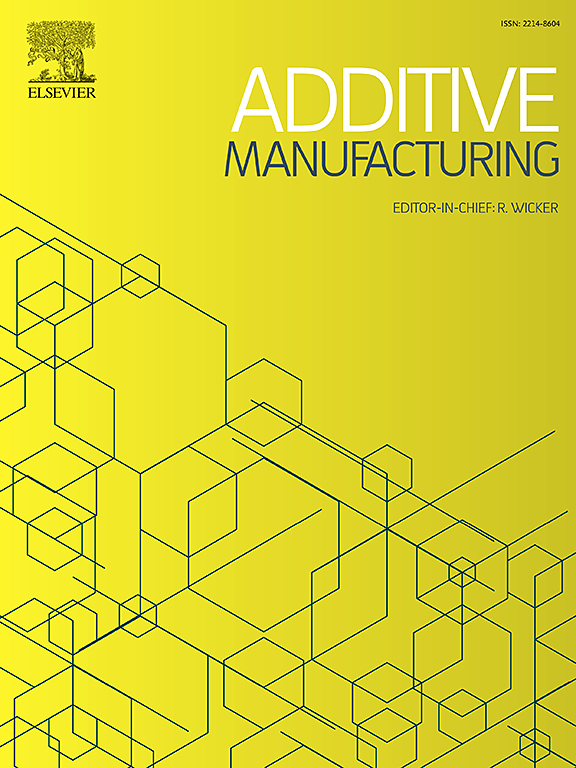Enhanced geometric accuracy in directed energy deposition via closed-loop melt pool height control using real-time thermal imaging
IF 10.3
1区 工程技术
Q1 ENGINEERING, MANUFACTURING
引用次数: 0
Abstract
This study presents a closed-loop melt pool height control system based on real-time thermal imaging to enhance the geometric accuracy of directed energy deposition (DED). Geometric inaccuracies in DED-printed components arise from the inherent thermal and geometric variations during the printing process. To improve geometric conformity with a predefined digital model, the proposed system employs a long-wave infrared camera to capture real-time thermal images of the melt pool. The peak-to-boundary temperature difference (TD), defined as the difference between the peak and boundary temperatures of the melt pool, is extracted from these images. The correlation between TD, melt pool height, and laser power was analyzed under various DED conditions, and the results demonstrated a strong relationship between TD and both parameters. Using the TD as a feedback parameter, the laser power is dynamically adjusted to maintain a stable melt pool height throughout the printing process. The proposed system enables real-time estimation of the melt pool height, ensures height stability through closed-loop control, and provides detailed insights into the thermal and geometric variations that affect the accuracy of the final part. This approach reduces the geometric error relative to the predefined digital model to below 4 %, highlighting its effectiveness in enhancing the geometric accuracy in complex multi-bead, multi-layer structures.
通过实时热成像闭环熔池高度控制,提高了定向能沉积的几何精度
为了提高定向能沉积(DED)的几何精度,提出了一种基于实时热成像的闭环熔池高度控制系统。3d打印部件的几何不精确是由于打印过程中固有的热和几何变化引起的。为了提高与预定义数字模型的几何一致性,该系统采用长波红外相机捕获熔池的实时热图像。从这些图像中提取熔池峰边界温差(TD),定义为熔池峰边界温差。在不同的DED条件下,分析了TD、熔池高度和激光功率之间的相关性,结果表明TD与这两个参数之间存在较强的相关性。使用TD作为反馈参数,在整个打印过程中动态调整激光功率以保持稳定的熔池高度。所提出的系统能够实时估计熔池高度,通过闭环控制确保高度稳定,并提供对影响最终零件精度的热和几何变化的详细见解。该方法将相对于预定义数字模型的几何误差降低到4 %以下,突出了其在提高复杂多头、多层结构几何精度方面的有效性。
本文章由计算机程序翻译,如有差异,请以英文原文为准。
求助全文
约1分钟内获得全文
求助全文
来源期刊

Additive manufacturing
Materials Science-General Materials Science
CiteScore
19.80
自引率
12.70%
发文量
648
审稿时长
35 days
期刊介绍:
Additive Manufacturing stands as a peer-reviewed journal dedicated to delivering high-quality research papers and reviews in the field of additive manufacturing, serving both academia and industry leaders. The journal's objective is to recognize the innovative essence of additive manufacturing and its diverse applications, providing a comprehensive overview of current developments and future prospects.
The transformative potential of additive manufacturing technologies in product design and manufacturing is poised to disrupt traditional approaches. In response to this paradigm shift, a distinctive and comprehensive publication outlet was essential. Additive Manufacturing fulfills this need, offering a platform for engineers, materials scientists, and practitioners across academia and various industries to document and share innovations in these evolving technologies.
 求助内容:
求助内容: 应助结果提醒方式:
应助结果提醒方式:


